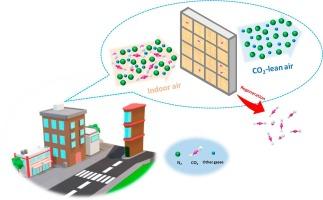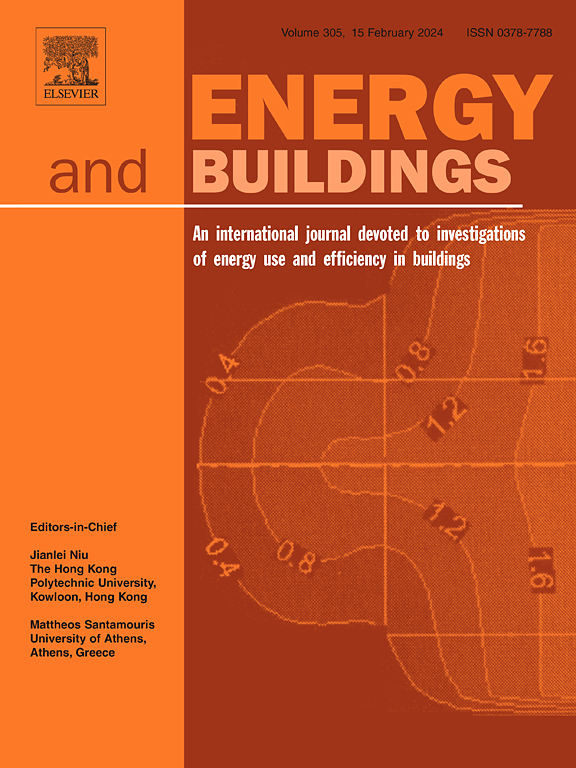Demonstration of the carbon capture with building make-up air unit
IF 6.6
2区 工程技术
Q1 CONSTRUCTION & BUILDING TECHNOLOGY
引用次数: 0
Abstract
Building-integrated carbon capture technology has the potential to reduce the cost of CO2 capture while improving indoor air quality (IAQ). To promote the adoption of CO2 capture in a building environment, this study investigated the possibility of integrating carbon capture technology with an existing rooftop make-up air unit (MAU) system to trap CO2. Here, a modular compact CO2 capture system containing amine-functionalized polymer fibers was examined. The system, which was installed at the exhaust of the MAU, captures CO2 before it leaves the building to enter the atmosphere as a greenhouse gas. The demonstrated average amount of CO2 captured was 1.1–1.4 mmol/g of adsorbent material. Techno-economic analysis (TEA) was further performed on the CO2 capture system, considering material costs, energy costs, as well as transportation and regeneration costs. These results were then used to estimate the levelized cost per ton CO2 captured (LCOC). To achieve LCOC below $100/t-CO2, adsorbents should have working capacities of 4.9 t and 3 t-CO2/year for 5 years and 10 years of operation, respectively. In summary, this study highlights a viable path toward the decarbonization of the commercial buildings sector and provides quantitative performance and economic insight on the suitability of building-integrated carbon capture technology.

利用楼宇补风装置进行碳捕获示范
建筑集成碳捕集技术有可能降低二氧化碳捕集成本,同时改善室内空气质量(IAQ)。为了促进二氧化碳捕集技术在建筑环境中的应用,本研究调查了将碳捕集技术与现有屋顶补风装置(MAU)系统集成以捕集二氧化碳的可能性。在这里,我们研究了一种含有胺功能化聚合物纤维的模块化紧凑型二氧化碳捕集系统。该系统安装在 MAU 的排气口,可在二氧化碳作为温室气体离开建筑物进入大气之前将其捕获。经证实,二氧化碳的平均捕获量为 1.1-1.4 mmol/g(吸附材料)。考虑到材料成本、能源成本以及运输和再生成本,对二氧化碳捕集系统进一步进行了技术经济分析(TEA)。这些结果被用于估算每吨二氧化碳捕集的平准化成本(LCOC)。若要实现低于 100 美元/吨-CO2 的 LCOC,吸附剂在 5 年和 10 年运行期内的工作能力应分别为 4.9 吨和 3 吨-CO2/年。总之,本研究强调了商业建筑领域去碳化的可行途径,并就建筑一体化碳捕集技术的适用性提供了定量性能和经济见解。
本文章由计算机程序翻译,如有差异,请以英文原文为准。
求助全文
约1分钟内获得全文
求助全文
来源期刊

Energy and Buildings
工程技术-工程:土木
CiteScore
12.70
自引率
11.90%
发文量
863
审稿时长
38 days
期刊介绍:
An international journal devoted to investigations of energy use and efficiency in buildings
Energy and Buildings is an international journal publishing articles with explicit links to energy use in buildings. The aim is to present new research results, and new proven practice aimed at reducing the energy needs of a building and improving indoor environment quality.
 求助内容:
求助内容: 应助结果提醒方式:
应助结果提醒方式:


